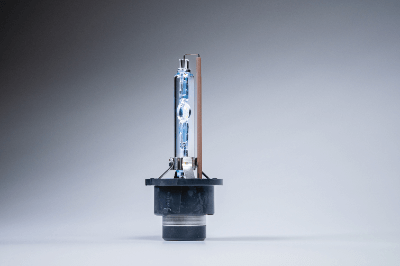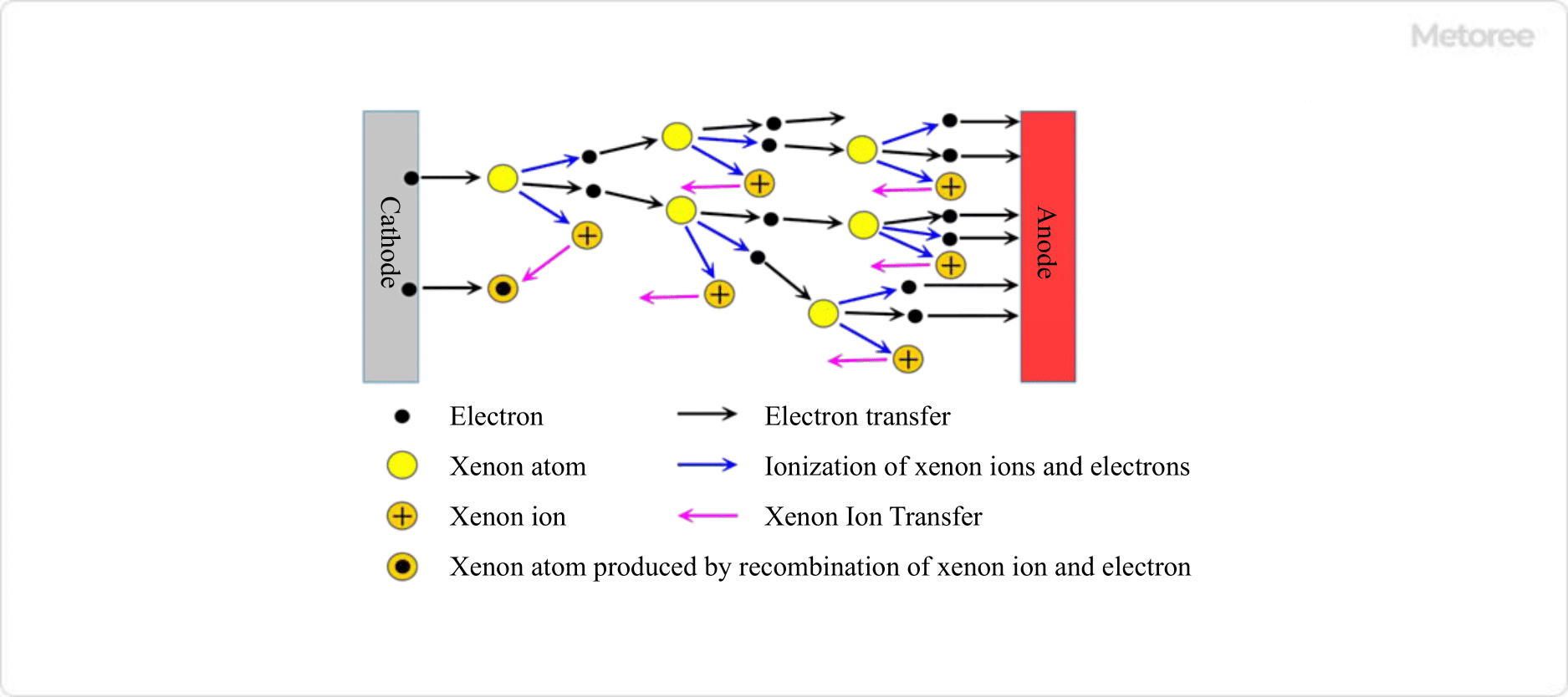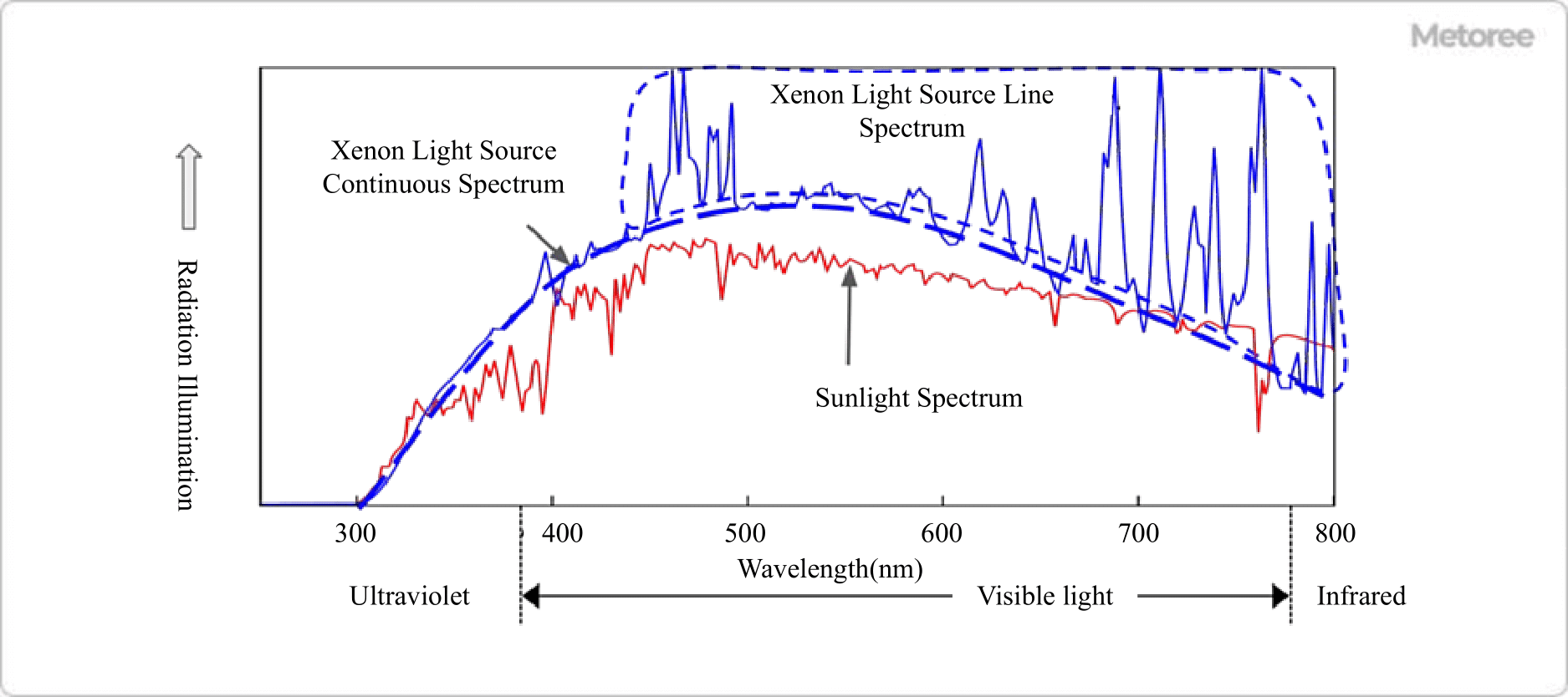What Is a Xenon Light Source?

A xenon light source is an artificial light source that uses light emitted by an arc discharge in xenon gas.
Arc discharge refers to the ionization of gas molecules between positive and negative electrodes, resulting in a plasma state, through which an electric current flows. Due to its luminescence principle, xenon light sources are characterized by lower power consumption and longer life than incandescent light sources that energize filaments such as incandescent lamps. Other major artificial light sources include halogen lamps, but xenon light sources are more powerful than halogen lamps and can irradiate smaller areas.
Xenon lights are sometimes referred to as xenon lamps, but this term is confusing with the term xenon-filled incandescent light bulb (xenon bulb), so this article will use the term xenon light source. A xenon light source that emits light by passing an electric current through a filament is completely different from a xenon light source that emits light by passing an electric current through plasmaized xenon gas.
Uses of Xenon Light Sources
Xenon light sources have a relatively long life because they do not heat a filament like incandescent light sources. Also, when combined with special filters, xenon light sources produce a spectrum that is almost identical to that of sunlight, making them useful in industrial, medical, and other fields where natural colors need to be reproduced.
1. Applications of Short-Arc Lamps
Xenon short-arc lamps are used as point light sources with high luminance in the following applications.
Illumination
Although they are used as high-luminance light sources such as searchlights and headlights, they are most frequently used for stage lighting and surgical lamps, where natural color reproduction is required. They are also used as light sources for endoscopes because of their compact size.
Light Source for Testing
As a solar simulator with properties similar to sunlight, it is ideal for testing the power generation efficiency of solar panels or conducting durability tests such as fading or degradation of materials due to sunlight. Because of its ability to output light of a wide range of wavelengths, it is used as a light source for spectroscopic analysis equipment, as well as for inspecting displays and measuring devices.
Light Source for Projection
Xenon short-arc lamps are the best choice for light sources for projectors, planetarium projectors, and large projectors, because in addition to being a point light source, they require stable output and high color rendering.
2. Applications of Long Arc Lamps
Xenon long-arc lamps are often used as large light sources that need to illuminate a wide area, such as floodlights in stadiums and aircraft guide lights at airports.
3. Flash Lamp Applications
Xenon flash lamps, which are most often seen, are flash lamps used for photography. They are used in large-sized flash lamps used in photo studios and other facilities, as well as flash lamps for SLR cameras.
Other applications include use as xenon light sources for treating burn scars and birthmarks by improving blood flow to the skin (to promote regeneration), and as light sources for IPL (Intense Pulse Light) hair removal.
Principle of Xenon Light Sources

Figure 1. Arc discharge
The basic structure of a xenon light source consists of a quartz glass tube filled with xenon gas, two electrodes, and a lighting circuit connected to both electrodes from the outside of the glass tube. The role of the lighting circuit is to apply high-voltage pulses to the electrodes to cause dielectric breakdown, which initiates an arc discharge. Once initiated, the arc discharge can be sustained even if the applied voltage is lowered, so the rated voltage of most xenon light sources is 15 to 30 V.

Figure 2. Spectra of xenon light source and sunlight
Some of the electrons in a xenon atom are excited without ionization, and when the excited electrons return to their ground state, they emit light at a specific wavelength (line spectrum). Therefore, the spectrum of a xenon light source is a continuous spectrum plus a line spectrum.
Types of Xenon Light Sources
Xenon light sources can be broadly classified into the following types
1. Short-Arc Lamps

Figure 3. Xenon short-arc lamp
Short-arc lamps have a short distance of less than a few millimeters between electrodes, making the emission area smaller than that of other xenon light sources and enabling the creation of a highly luminous point light source. The quartz glass tube is filled with xenon gas at high pressure (5 to 10 atmospheres) at room temperature. Xenon atoms emit light due to direct current discharge, and stable output can be obtained in a short period of time.
2. Long Arc Lamp
A long arc lamp consists of a long, narrow quartz glass tube filled with xenon gas at nearly one atmosphere (105 Pa). They are characterized by their extremely high luminous flux and usually have a rated power consumption of 1 kW or more; some lamps exceed 50 kW.
Generally, they emit light by alternating current discharge, and the distance between the electrodes is 5 to 10 cm or more.
3. Flash Lamp
A xenon light source that emits light for an extremely short period of time (several μs to several ms). Since the emission time is short, no cooling device is required, and the overall size can be reduced.
They come in a variety of shapes and are filled with 2 to 10 kPa of xenon gas. There are two types: a pulse voltage is applied at startup, and a shimmer method in which a weak current is constantly applied even when the light is not on to enable high-speed lighting.